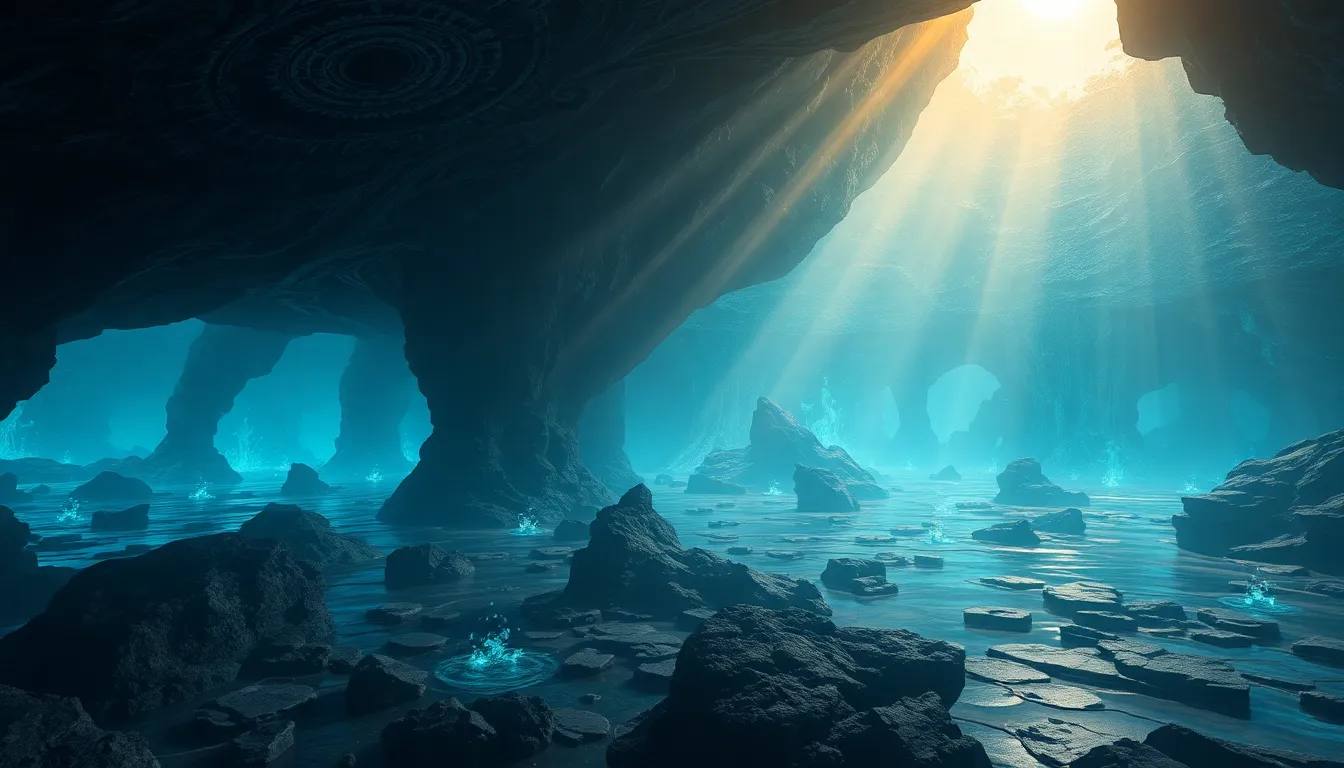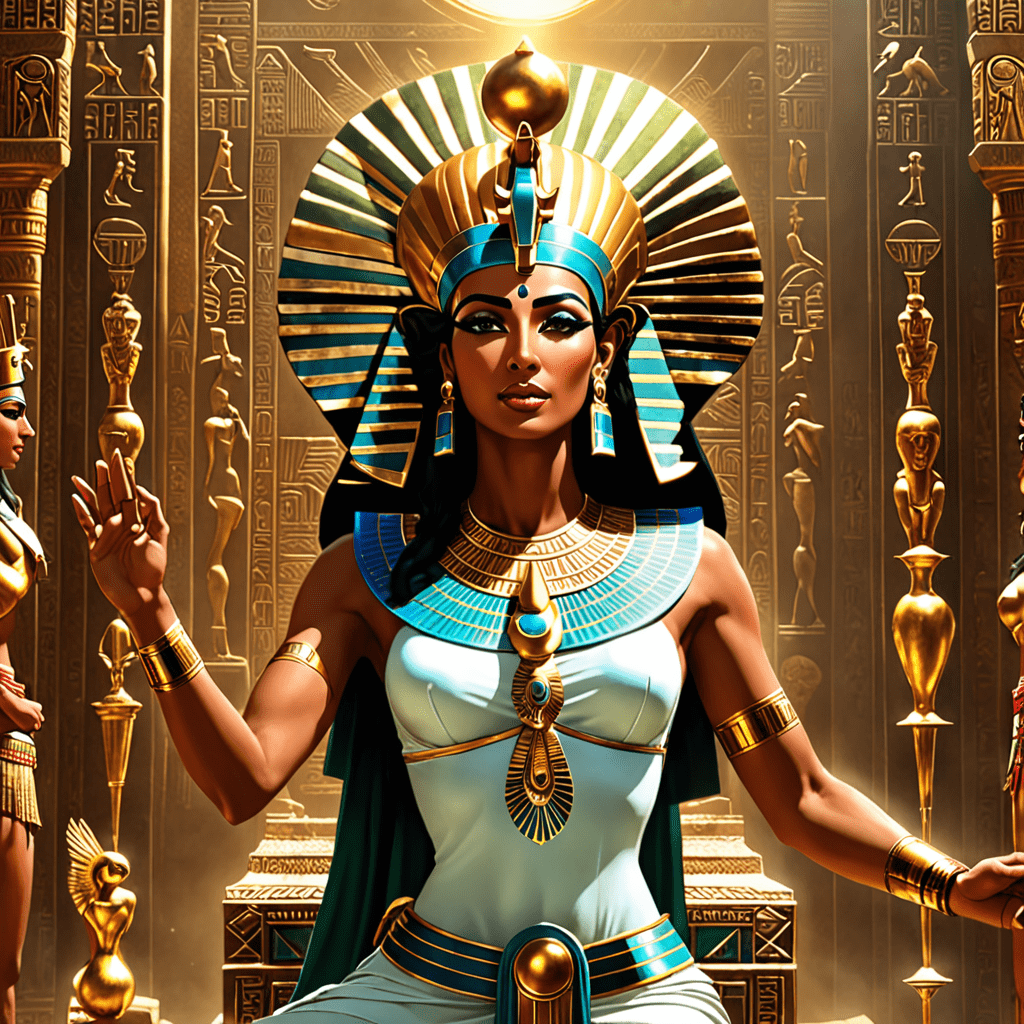The Mythic Underworld: Sacred Places Below the Surface
1. Introduction to the Mythic Underworld
The mythic underworld is a fascinating concept found in many cultures throughout history. Defined as a realm beneath the surface of the earth, it often serves as a place of the dead, a domain of spirits, or a site of transformation. The significance of the underworld varies across cultures, but it is universally recognized as a crucial element of mythology and spirituality. Sacred places, such as caves and rivers, have been linked to these realms, emphasizing their importance in understanding the human experience, mortality, and the afterlife.
2. Historical Perspectives on the Underworld
Ancient civilizations had diverse beliefs surrounding the underworld, often reflecting their values and understandings of life and death. In Mesopotamia, the underworld known as Kur was a dreary place where souls resided in darkness. The Egyptians envisioned the underworld, or Duat, as a complex realm where the dead faced judgment and could attain eternal life through the favor of the gods.
Similarly, the Greeks imagined the underworld as Hades, governed by the god of the same name. It was a place where souls journeyed after death, encountering various trials and tribulations. Comparative analysis reveals fascinating parallels and differences in these underworld myths:
- Mesopotamia: Focus on a desolate afterlife.
- Egypt: Emphasis on judgment and the possibility of resurrection.
- Greece: A structured realm with varied experiences based on one’s life.
3. Sacred Geography: Locations of the Underworld
The mythic underworld is often associated with specific physical locations in the natural world. These sites serve as gateways or symbolic representations of the underworld in mythology. Notable locations include:
- Caves: Many cultures believe that caves are entrances to the underworld, such as the Cave of the Nymphs in Greek mythology.
- Mountains: Sacred mountains, like Mount Olympus, are often seen as connecting the earth to the divine.
- Rivers: The River Styx in Greek mythology serves as the boundary between the living and the dead.
4. The Role of Mythology in Shaping Underworld Narratives
Myths featuring the underworld often explore profound themes of love, loss, and transformation. One of the most famous is the tale of Orpheus and Eurydice, where Orpheus descends into the underworld to retrieve his beloved, only to lose her again due to his disobedience. Such narratives highlight the challenges faced in confronting death and the emotional weight of loss.
Another significant myth is that of Persephone, who spends part of the year in the underworld, symbolizing the cycle of seasons and the duality of life and death. These stories often exemplify the archetype of the hero’s journey, where characters must venture into the underworld to gain wisdom or reclaim what was lost.
5. Symbolism of the Underworld in Art and Literature
The underworld has been a rich source of inspiration in art and literature throughout history. From Dante’s “Inferno” to contemporary films, the underworld serves as a backdrop for exploration of moral, existential, and psychological themes. Artists have depicted the underworld in various ways:
- Visual Art: Paintings like Hieronymus Bosch’s “The Garden of Earthly Delights” depict the consequences of earthly actions.
- Literature: Epic poems often incorporate journeys to the underworld, reflecting the human condition.
- Folklore: Stories passed down through generations continue to evolve, influencing modern storytelling.
6. Spiritual Practices and Rituals Linked to the Underworld
Many cultures have rituals honoring the underworld and the ancestors who reside there. These practices serve to maintain a connection with the spiritual realm and acknowledge the significance of death in the cycle of life. Some examples include:
- Ancestor Worship: Many traditions involve rituals to honor deceased relatives, inviting their spirits to participate in family life.
- Funerary Rites: Burial practices often include offerings or ceremonies to ensure safe passage to the afterlife.
- Modern Spiritual Movements: Contemporary practices often draw on ancient rituals, emphasizing the importance of the underworld in spiritual journeys.
7. Psychological Interpretations of the Underworld
Psychologically, the underworld can be viewed through a Jungian lens as a representation of the unconscious mind. It embodies the darker aspects of the psyche, where fears and repressed emotions reside. This perspective emphasizes the underworld as a metaphor for personal transformation:
- Shadow Work: The process of confronting one’s inner darkness to achieve personal growth.
- Transformation Journeys: Many individuals experience profound insights and healing by exploring their personal “underworld.”
8. Contemporary Relevance of the Mythic Underworld
The mythic underworld continues to resonate in modern spirituality and psychology. Contemporary literature and films frequently draw on underworld themes, exploring humanity’s relationship with death and the unknown. Noteworthy examples include:
- Literature: Works like “The Lovely Bones” explore the afterlife in personal and reflective ways.
- Film: Movies like “Coco” delve into cultural interpretations of death and remembrance.
9. Environmental and Ecological Connections to the Underworld
The relationship between sacred sites linked to the underworld and their natural environments is significant. Many of these sites are threatened by climate change and human activity, making their preservation crucial. They serve not only as spiritual locations but also as reminders of the interconnectedness of life and nature.
10. Conclusion: The Enduring Legacy of the Mythic Underworld
The mythic underworld remains a potent symbol in various cultures, representing our fears, hopes, and the mysteries of existence. From ancient myths to contemporary interpretations, the underworld serves as a reminder of the cyclical nature of life and death. Understanding these sacred places below the surface allows us to explore our own journeys through life, death, and transformation. As we continue to engage with these themes, the legacy of the mythic underworld endures, enriching our spiritual and psychological landscapes.



